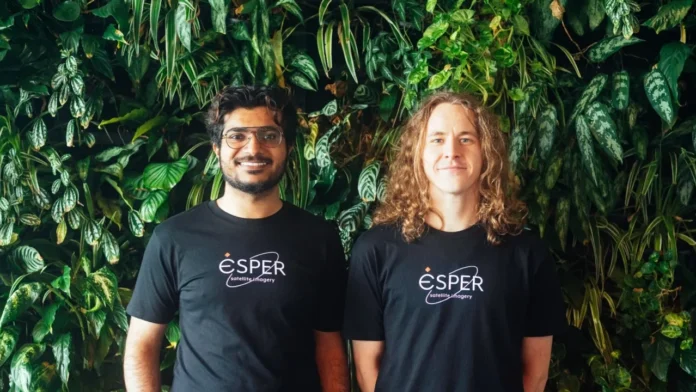Imagine being able to peer into the very essence of our planet from the vastness of space, not just capturing its physical form but also its unique chemical fingerprint. This is precisely the power of hyperspectral imaging satellites, and Australian startup Esper is on a mission to make this technology more affordable and accessible than ever before.
What is Hyperspectral Imaging?
Hyperspectral imaging, often referred to as “chemical imaging,” is a game-changer in the world of remote sensing. It utilizes a spectrometer to capture detailed information beyond the visible spectrum, revealing the unique “spectral signature” of objects on Earth. Imagine being able to see not just the color of a plant, but its precise chemical composition, allowing you to identify its health, stress levels, or even specific nutrient deficiencies.
This ability to see beyond the visible opens doors to a vast array of applications. From environmental monitoring and disaster response to precision agriculture and mineral exploration, hyperspectral imaging satellites have the potential to revolutionize how we interact with and manage our planet.
ALSO READ: James Webb Discovers “Red Giant” Black Hole from the Dawn of Time
Esper: Innovation on a Budget
While the potential of hyperspectral imaging is undeniable, the technology has historically been limited by its high cost. Traditional satellites utilizing this technology often come with hefty price tags, making them inaccessible to many potential users. This is where Esper steps in.
Founded in 2021 by Shoaib Iqbal and Joey Lorenczak, Esper is driven by a desire to make hyperspectral imaging affordable and readily available. With a starting point of just $1 million in pre-seed funding and support from the Australian government, they are taking a unique approach to achieve their goal.
The Secret Sauce: Smart Sensors and Software
Instead of relying on expensive, custom-built hardware, Esper’s strategy lies in utilizing smart sensor technology. They cleverly incorporate off-the-shelf components and consumer-level electronics, significantly reducing costs. However, this unconventional approach doesn’t compromise on quality. Esper’s secret weapon is its proprietary software. This software acts as the brain of the system, processing and interpreting the captured data, ensuring accurate and meaningful information is extracted from the “spectral gibberish” raw data.
The Over the Rainbow Mission
This ingenuity is on full display with Esper’s first demonstration satellite, aptly named Over the Rainbow. Launched on SpaceX’s Transporter-10 mission, this satellite serves as a crucial testbed for Esper’s core technology: a miniature spectrometer system and the accompanying data processing software. This software plays a vital role, as Esper CEO Shoaib Iqbal explains, “We’re a really low-cost piece of equipment… then we’re engineering it to be space-ready. There’s a lot of software that really comes into play to make sure it works that way. Otherwise, we’re capturing spectral gibberish and you can’t really make a lot of sense of that.”
From Hackathons to Disaster Response
Esper’s journey began in early 2021, born from the innovative spirit of Iqbal and Joey Lorenczak, who met in a chemistry class at Monash University. Their initial foray into space tech took a different turn when, inspired by the devastating bushfires that ravaged southeast Australia in 2019, they pivoted their focus towards Earth observation, seeking to use technology for positive environmental impact. Their journey began by participating in hackathons, eventually winning Unihack in 2019 for a different space-related project. This initial success fueled their passion, leading them to “go all in” on hyperspectral imaging.. This shift led them to discover the immense potential of hyperspectral imaging.
Their dedication paid off. Esper gained traction not only in the mining industry but also with disaster response companies, further validating their chosen path. They secured funding from prominent investors and government grants, allowing them to move forward with their ambitious mission.
ALSO READ: From Rovers to Wings: The Rise of MAGGIE, NASA’s Vision for the Future of Martian Exploration
Building a Constellation for the Future
Esper’s journey is far from over. They successfully launched their first demonstration satellite on a SpaceX mission in March 2024, aptly named “Over the Rainbow,” marking a significant milestone. This initial mission aims to validate their core technology and pave the way for future advancements.
The team is actively working towards its ambitious goal of launching a constellation of 18 hyperspectral imaging satellites by 2028. This constellation will provide daily global revisit rates, ensuring continuous and up-to-date data availability. They plan to launch a second demonstration satellite with the Indian Space Research Organization (ISRO) later this spring and aim to start offering commercial services by late 2024 or early 2025.
The Impact of Affordable Hyperspectral Imaging
Esper’s mission to make hyperspectral imaging satellites affordable has the potential to create a ripple effect across various sectors. Imagine farmers being able to precisely monitor crop health and optimize resource usage. Environmental agencies could gain invaluable insights into deforestation and pollution levels, enabling them to take timely and effective action. Resource exploration companies could locate valuable minerals with greater accuracy and efficiency. These are just a few examples of the transformative potential Esper’s technology holds.
By breaking down cost barriers, Esper is not just building satellites; they are building a future where hyperspectral imaging becomes a powerful tool for a more sustainable and informed world. Their story serves as an inspiration, demonstrating that innovation and passion can truly make a difference, one spectral signature at a time.
